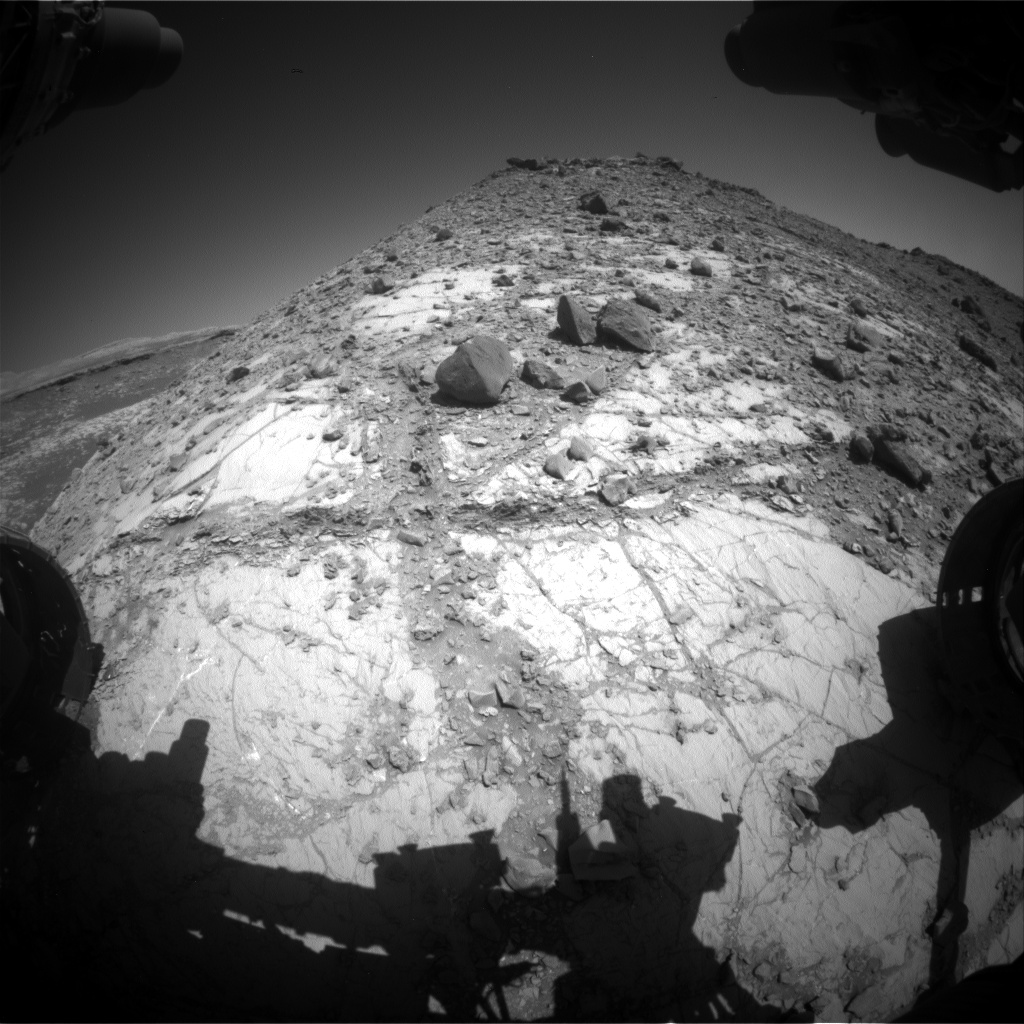2 min read

We found out that over the weekend the planned “bump” to get the rover in position for contact science didn’t execute. That meant that when we started planning today, we were greeted with the familiar view of the workspace from last week. Although it was disappointing that we weren’t able to do contact science today, the bright side was that instead we got a massive 2 hour science block! We’re in a great position to observe the Gediz Valles deposits (informally named “the claw”) on top of the Greenheugh Pediment, so the Sol 2638 plan has three more ChemCam RMI mosaics in addition to the two collected over the weekend. The giant science block also allowed us to fit two ChemCam chemistry observations in. One was a follow up observation right next to the vein target Hascosay that was observed on sol 2636. Hascosay had some very interesting chemistry, so the new target “Northon” will take another look just a few centimeters away. The other ChemCam chemistry target is a small rock named “Bruntsfield” that looked a bit different than some of the other rocks in the area. Mastcam will document the two chemistry targets and then will collect a 3x1 mosaic of a group of rocks named “Clachtoll” to study their textures.
Amusingly, even though the target names Clachtoll and Bruntsfield were chosen at random from our long list of potential names, we learned that they were very familiar to one of our team members! He told us that he spent a lot of time camping at Clachtoll (the one on Earth, presumably) on one of his first major geology projects, and Bruntsfield was the name of a neighborhood in Edinburgh where he had lived! We resisted the urge to rename Clachtoll to simply “Sanjeev’s tent.”
The Sol 2638 plan is rounded out with some atmospheric observations: a dust devil movie at the end of the long science block, and a couple of movies to watch for clouds early in the morning on Sol 2639. Hopefully the bump will go well in the 2639 plan and we’ll be back on track for contact science later in the week!
Written by Ryan Anderson, Planetary Geologist at USGS Astrogeology Science Center







